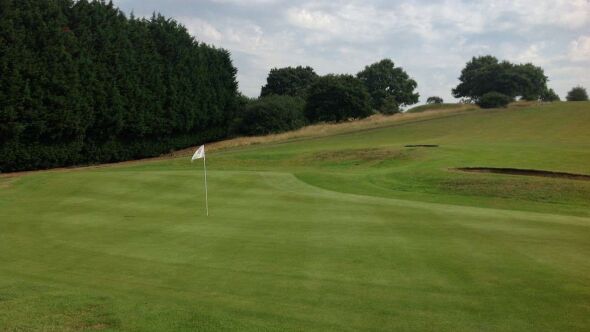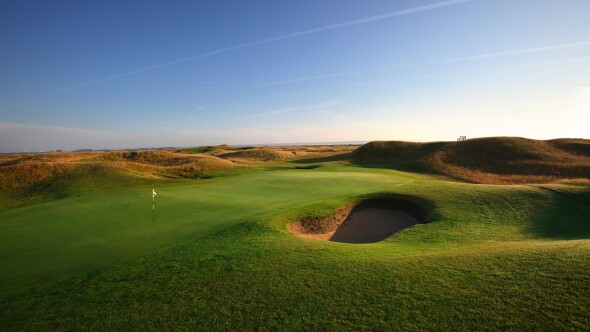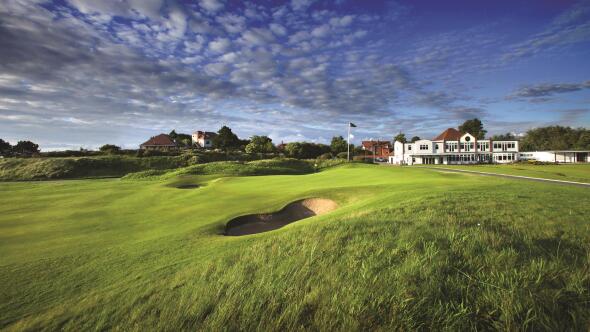Royal Blackheath Golf Club

About
Holes
18
Type
Private
Style
Parkland
Par
71
Length
6278 yards
Slope
128
Rating
71.5
| Tee | Par | Length | Rating | Slope |
|---|---|---|---|---|
| Purple | 71 | 6278 yards | 71.5 | 128 |
| Purple (W) | 71 | 6278 yards | 76.9 | 139 |
| Gold | 71 | 5996 yards | 70.0 | 125 |
| Gold (W) | 71 | 5996 yards | 75.6 | 138 |
| Composite | 71 | 5866 yards | 69.3 | 123 |
| Composite (W) | 71 | 5866 yards | 74.6 | 135 |
| Blue | 71 | 5617 yards | 67.8 | 124 |
| Blue (W) | 71 | 5617 yards | 73.0 | 130 |
Scorecard for Royal Blackheath Golf Club
Metrics:
| Hole | 1 | 2 | 3 | 4 | 5 | 6 | 7 | 8 | 9 | Out | 10 | 11 | 12 | 13 | 14 | 15 | 16 | 17 | 18 | In | Total |
|---|---|---|---|---|---|---|---|---|---|---|---|---|---|---|---|---|---|---|---|---|---|
| Purple M: 71.5/128 | 489 | 393 | 431 | 195 | 356 | 473 | 377 | 154 | 359 | 3227 | 350 | 378 | 175 | 542 | 380 | 348 | 163 | 428 | 287 | 3051 | 6278 |
| Gold M: 70.0/125 W: 75.6/138 | 473 | 371 | 420 | 191 | 344 | 460 | 368 | 134 | 350 | 3111 | 329 | 361 | 162 | 522 | 366 | 338 | 139 | 399 | 269 | 2885 | 5996 |
| Composite M: 69.3/123 W: 74.6/135 | 473 | 365 | 420 | 195 | 255 | 473 | 326 | 154 | 350 | 3011 | 329 | 378 | 162 | 499 | 323 | 348 | 163 | 399 | 254 | 2855 | 5866 |
| Blue M: 67.8/124 W: 73.0/130 | 461 | 365 | 411 | 175 | 255 | 451 | 326 | 114 | 343 | 2901 | 332 | 348 | 147 | 499 | 323 | 329 | 132 | 352 | 254 | 2716 | 5617 |
| Handicap | 13 | 3 | 1 | 11 | 7 | 17 | 5 | 15 | 9 | 16 | 6 | 14 | 10 | 4 | 8 | 12 | 2 | 18 | |||
| Par | 5 | 4 | 4 | 3 | 4 | 5 | 4 | 3 | 4 | 36 | 4 | 4 | 3 | 5 | 4 | 4 | 3 | 4 | 4 | 35 | 71 |
Course Details
Year Built
1892
Golf Season
Year round
Rentals/Services
Carts
Yes
Pull-carts
Yes
Practice/Instruction
Golf School/Academy
Yes
Teaching Pro
Yes
Pitching/Chipping Area
Yes
Putting Green
Yes
Policies
Metal Spikes Allowed
Yes
Fivesomes Allowed
Yes
Walking Allowed
Yes
Dress code
Proper attire is required.
Food & Beverage
Bar, CateringAvailable Facilities
Clubhouse, Meeting Facilities, Banquet Facilities
The Best Way To Book Is With GolfPass+
10 rounds of waived fees
$120 in tee time credits
Tee Time Protection
Redeem GolfPass points
Reviews
Be the first to leave a review
Business Tools for Golf Course Operators
Nearby Courses
Golf Packages
Royal St George’s Golf Package
FROM $527 (USD)
LONDON| Staying on the scenic east coast of Kent, you will be situated in the perfect position to play 3 past and present Open Championship Courses. After taking on this accomplishing feat, enjoy a more relaxing round at Littlestone. Take in the amazing views of the English Channel at North Foreland and finish the day back at the hotel enjoying exquisite dining. A golf tour to Kent is certainly one to organise!
England’s Royal Golf Package
FROM $587 (USD)
SOUTHPORT | Experience outstanding golf along England’s golf coast with a tour of some of the most famous courses England has to offer. Take on the 3 Royal courses, including Royal Lytham & St Annes and Royal Birkdale which are 2 of only 3 golf clubs to have hosted The Walker Cup, Ryder Cup and The Open. All from a convenient central location, this trip is definitely a must do for any links golf enthusiast!
Featured Content
Course Layout

























